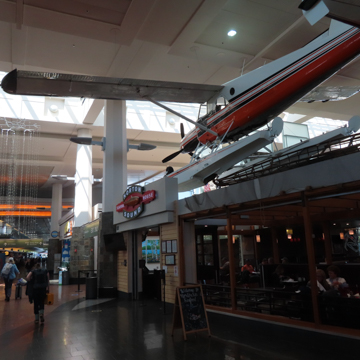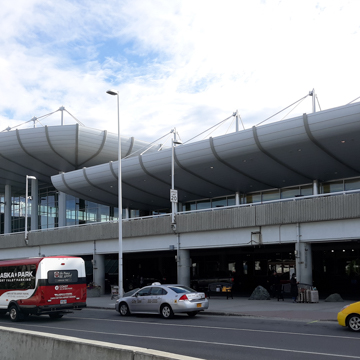You are here
Ted Stevens Anchorage International Airport
The Anchorage International Airport was built in 1948 with funding from a $13 million federal grant. It opened for air traffic in December 1951. The federal funding called for an "international type" airport in Anchorage as well as Fairbanks at a time when Alaska was still a territory (Alaska gained statehood in 1959).
The airport is home to a 4,608-acre building that houses cargo transports, 16 stores and boutiques, as well as 12 areas to buy food and drink. The airport features three asphalt runways that are over 10,500 feet long, with the longest runway being 12,400 feet long. Two of the runways are east/west, and one is north/south. The airport also maintains one helipad that is 100 by 100 feet long. The Anchorage Ted Stevens International Airport is situated roughly five miles southwest of Anchorage's downtown business district. It is accessible via International Airport Road in the western portion of the Anchorage bowl.
Upon arriving at the airport, one enters the main terminal into a brightly lit and open space that reminds the traveler of their Alaskan surroundings. Exterior windows open up to a view of the scenic Chugach Mountains to the east. Passengers are greeted with paintings and other art depicting Alaska's great outdoors, as well as several taxidermy animals, including brown and black bears, muskox, moose, and wolves. The airport's interior is divided into three concourses that underwent significant renovations between 1998 and 2010 to update and modernize the space. The concourse renovations hit several delays as a result of 9/11 and the creation of a new set of security standards that had to be addressed midway through the renovation process. The renovations cost over $200 million and took several years longer than initially envisioned.
The Ted Stevens International Airport functions as a commercial passenger airport, as well as one of the busiest cargo hubs in North America, largely due to its convenient location to major markets in both North America and Asia. In fact, in 2015 it was listed as the 4th busiest cargo airport in the world, behind Hong Kong. The FAA Airport Master Record for ANC lists its hub type as a medium. It serves as a major job supplier for the Municipality of Anchorage, with one out of every ten jobs being sourced from the airport. Over time, the airport has become a hub of transport for Alaskans all around the state, and provides the state with a way to transport not only passengers on commercial flights, but also transport important cargo to and from the Lower 48 and the rest of the world. In 2000, the Alaska Legislature renamed the Anchorage International Airport after Senator Ted Stevens, who served in office from 1968 to 2008, for his dedicated public service and success in securing appropriations for the State of Alaska. The airport is owned by the State of Alaska.
References
Marc Lester, “'Uncle Ted Is Back': The Story behind the New Bronze Ted Stevens Statue at the Anchorage Airport.” Anchorage Daily News, February 25, 2019.
Alaska Department of Transportation and Public Facilities. Ted Stevens Anchorage International Airport - History. Accessed April 28, 2020. http://dot.alaska.gov/anc/about/history.shtml.
Writing Credits
If SAH Archipedia has been useful to you, please consider supporting it.
SAH Archipedia tells the story of the United States through its buildings, landscapes, and cities. This freely available resource empowers the public with authoritative knowledge that deepens their understanding and appreciation of the built environment. But the Society of Architectural Historians, which created SAH Archipedia with University of Virginia Press, needs your support to maintain the high-caliber research, writing, photography, cartography, editing, design, and programming that make SAH Archipedia a trusted online resource available to all who value the history of place, heritage tourism, and learning.










